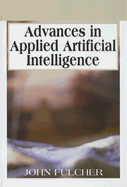Whether any one technology will prove to be the central one in creating artificial intelligence, or whether a combination of technologies will be necessary to create an artificial intelligence is still an open question, so many scientists are experimenting with mixtures of such techniques. In Advances in Applied Artificial Intelligence these questions are implicitly addressed by scientists tackling specific problems which require intelligence in both individual and combinations of specific artificial intelligence techniques.
Advances in Applied Artificial Intelligence includes extensive references within each chapter which an interested reader
may wish to pursue. Therefore, this book can be used as a central resource from which major avenues of research may be approached.
About the Author
John Fulcher is currently a professor of information technology in the School of IT and
Computer Science and director of the Health Informatics Research Centre at the University of Wollongong, Australia. He holds
a BEE with Honours from the University of Queensland (1972), a Research Masters from LaTrobe University, Melbourne (1981),
and a PhD from the University of Wollongong (1999). He is a member of the Association for Computing Machinery and a senior
member of the Institute of Electrical and Electronic Engineers. Professor Fulcher was an invited keynote speaker at the 5th
National Thai Computer Science and Engineering Conference. His research interests include microcomputer interfacing, computer
science education, artificial neural networks (especially higher-order ANNs), health informatics, and parallel computing.

